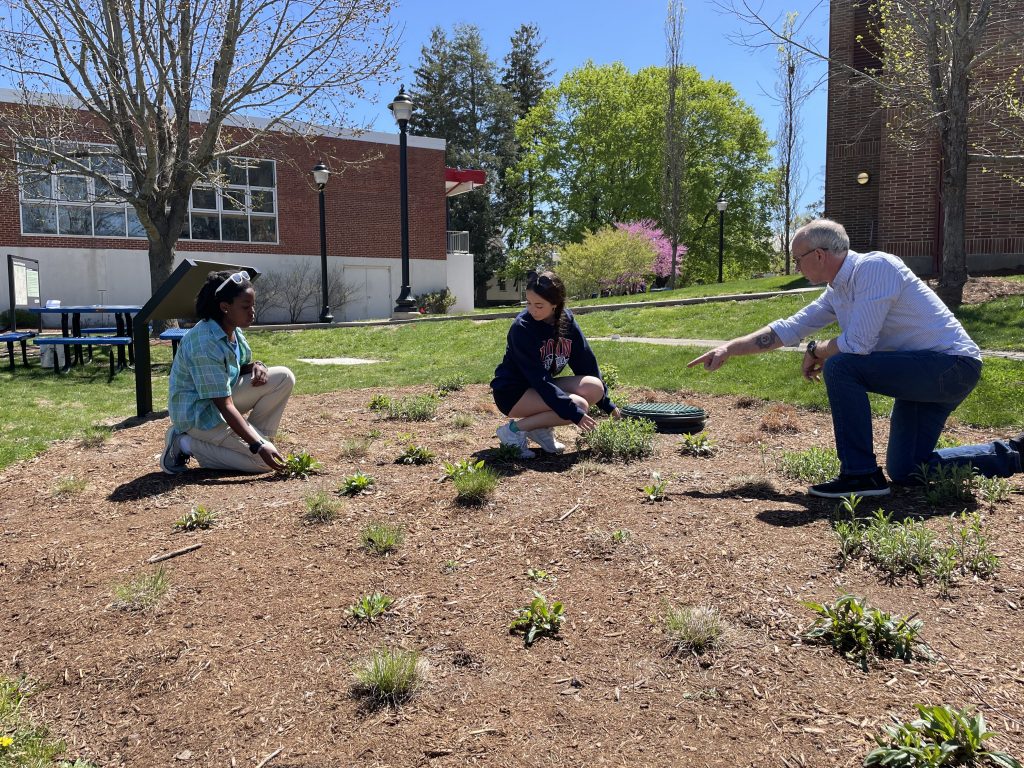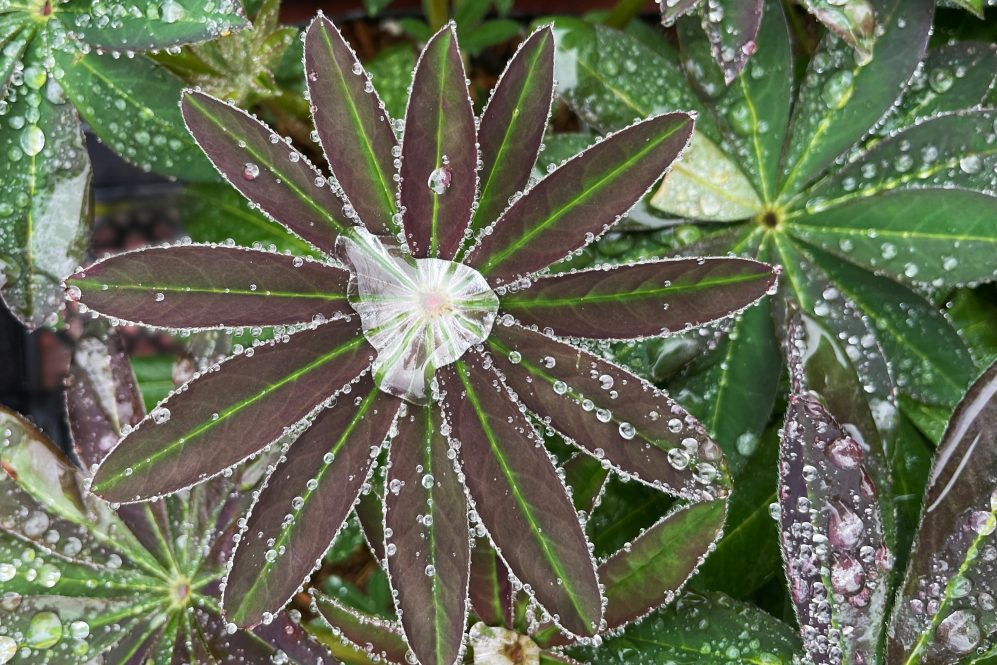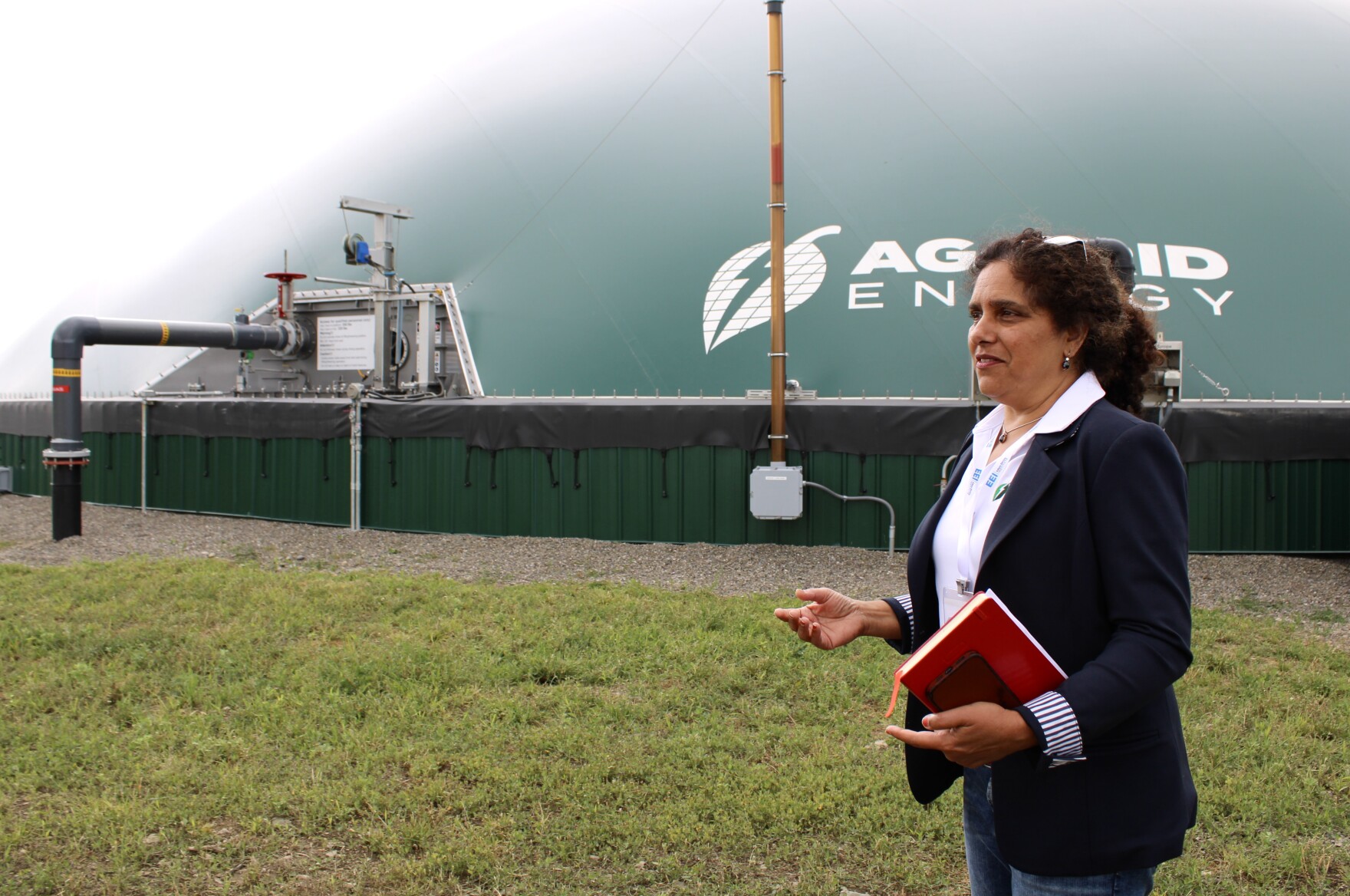Rain can dampen summer activities, but it’s also vital to the health of our landscapes – from replenishing groundwater to sustaining plants and crops.
Modern infrastructure and excess water from rain don’t always work perfectly in sync. Our homes, roads, parking lots, and buildings block water from soaking into the ground, leading to more flooding and erosion.
Mike Dietz ’94 (CLAS), ’01 MS, ’05 Ph.D., a senior extension educator and director of the Connecticut Institute of Water Resources, offers Connecticut residents some ideas to better handle Mother Nature’s wet presence.
Rain gardens offer a natural, beautiful solution, helping to manage stormwater while supporting cleaner water across Connecticut. UConn Extension is leading efforts to expand rain gardens statewide through resources including an app, a free online course, workshops, and hands-on support.
A rain garden is a shallow, landscaped area that captures and filters stormwater using plants, mulch, and ground covers. In residential neighborhoods, this reduces the amount of runoff that leaves the property in stormwater pipes, where it is sent untreated to local streams.
Because Connecticut is part of the Long Island Sound watershed, every rain garden also helps protect the Sound, restore local waterways, and strengthen ecosystems. These gardens filter pollutants from stormwater before it reaches rivers and the Sound, using nature’s own cleaning processes.
Dietz has spent years working with team members, developing rain garden resources for homeowners and communities.
“I like the hands-on aspect of Extension water programs where I can see tangible things happening,” Dietz says. “The research advances the science, but I find the greatest impact working with people to get practices implemented.”
Dietz remembers when UConn installed its first rain garden at the Towers dorms in 2004. Today, there are 30 rain gardens and 70 green infrastructure systems, including permeable pavements, across campus.
Last year, Dietz worked with students to install a rain garden near the UConn Dairy Bar. Amanda Stowe ’26 (CAHNR) and Grace Wright Goodison ’27 (CLAS, Neag) were part of that team that applied for and won a UConn Change grant for the project.

“I researched land management at UConn, especially with all our rain and having to walk through a huge puddle every time I left my dorm,” Wright Goodison says. “Native plants are important for our soil.”
“This is important. People are concerned with flooding, and rain gardens help,” says Stowe.
Both students began the project during class and used the undergraduate Change Grant to install the new garden.
The site already had a catch basin, but they disconnected stormwater drains from part of a nearby building so the runoff now flows into the rain garden instead. Both students called it a great learning opportunity in water quality, pollinators, and native plants. A sign now helps Dairy Bar visitors learn about rain gardens and the specific plants growing there.
“The goal was to take rainwater from the building and parking lots and disconnect it from Roberts Brook, which is already impaired,” Dietz says. “The rain garden is functioning as designed. And for pollinators, it’s a huge benefit – this was a barren landscape for them otherwise.”
This summer, UConn Extension’s CLEAR program is partnering with towns across Connecticut to install more rain gardens as part of municipal stormwater efforts. Step-by-step training and resources are available for anyone interested in creating one. The Rain Garden Design, Installation, and Maintenance Course offers six hours of free online learning across seven modules. While geared toward landscapers, contractors, and municipal staff, homeowners can take the course too.
Likewise, UConn CLEAR’s Rain Garden app puts helpful tools at your fingertips, including video tutorials, a sizing calculator, soil drainage tips, and plant recommendations. It’s designed for residents but works just as well for businesses and municipalities.
“Rain gardens are about more than just water,” Dietz says. “They’re pollinator habitats too. And if you pick the right spot, the only real cost is your time, labor, and the plants. It’s not a lot of work to implement.”
Planting a rain garden is a small step that makes a big impact on Connecticut’s water and communities. Easy to install and low maintenance, rain gardens are an ideal way to replace puddles with pollinators and beauty.
This work relates to CAHNR’s Strategic Vision area focused on Fostering Sustainable Landscapes at the Urban-Rural Interface.
Follow UConn CAHNR on social media



